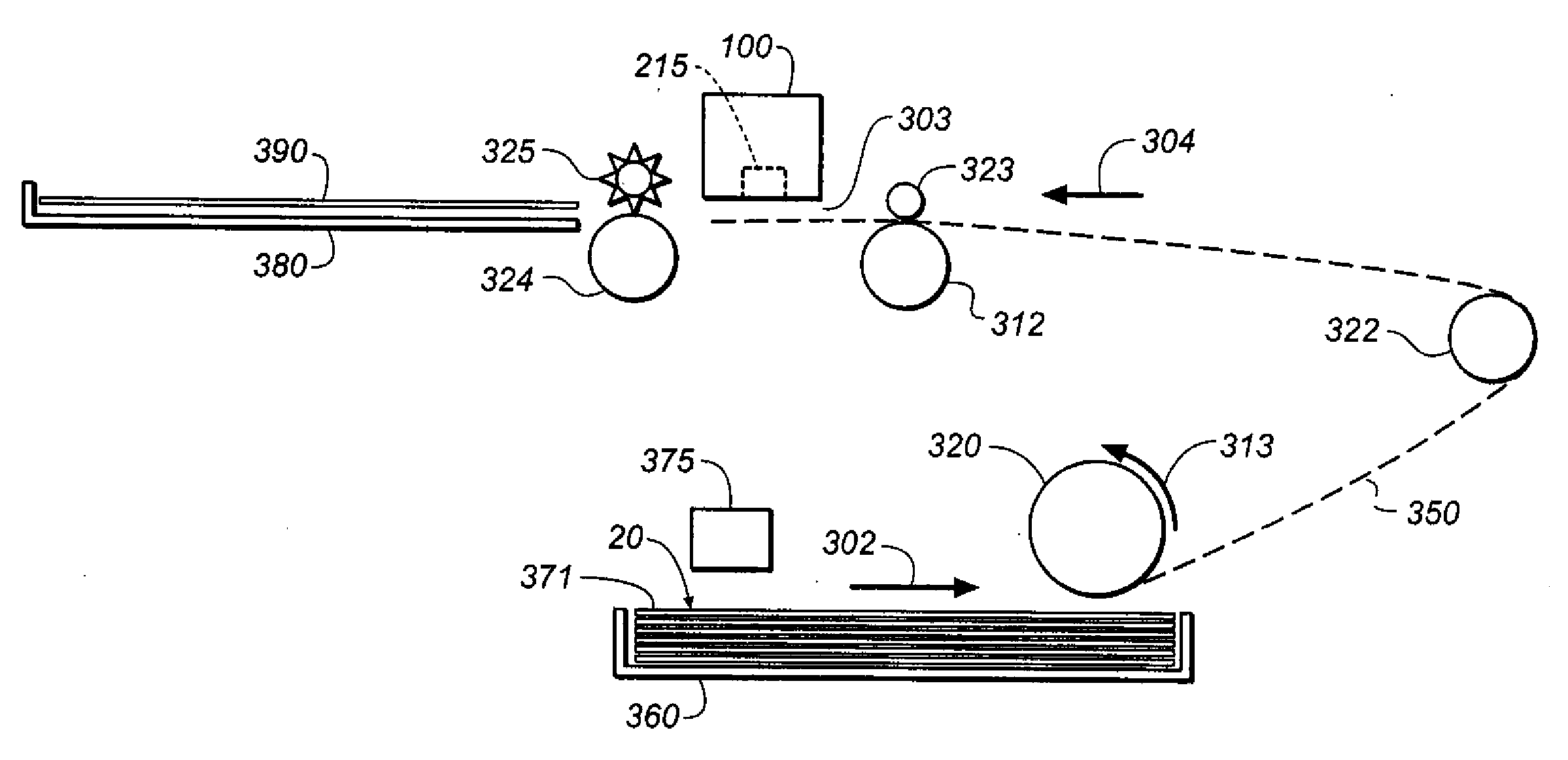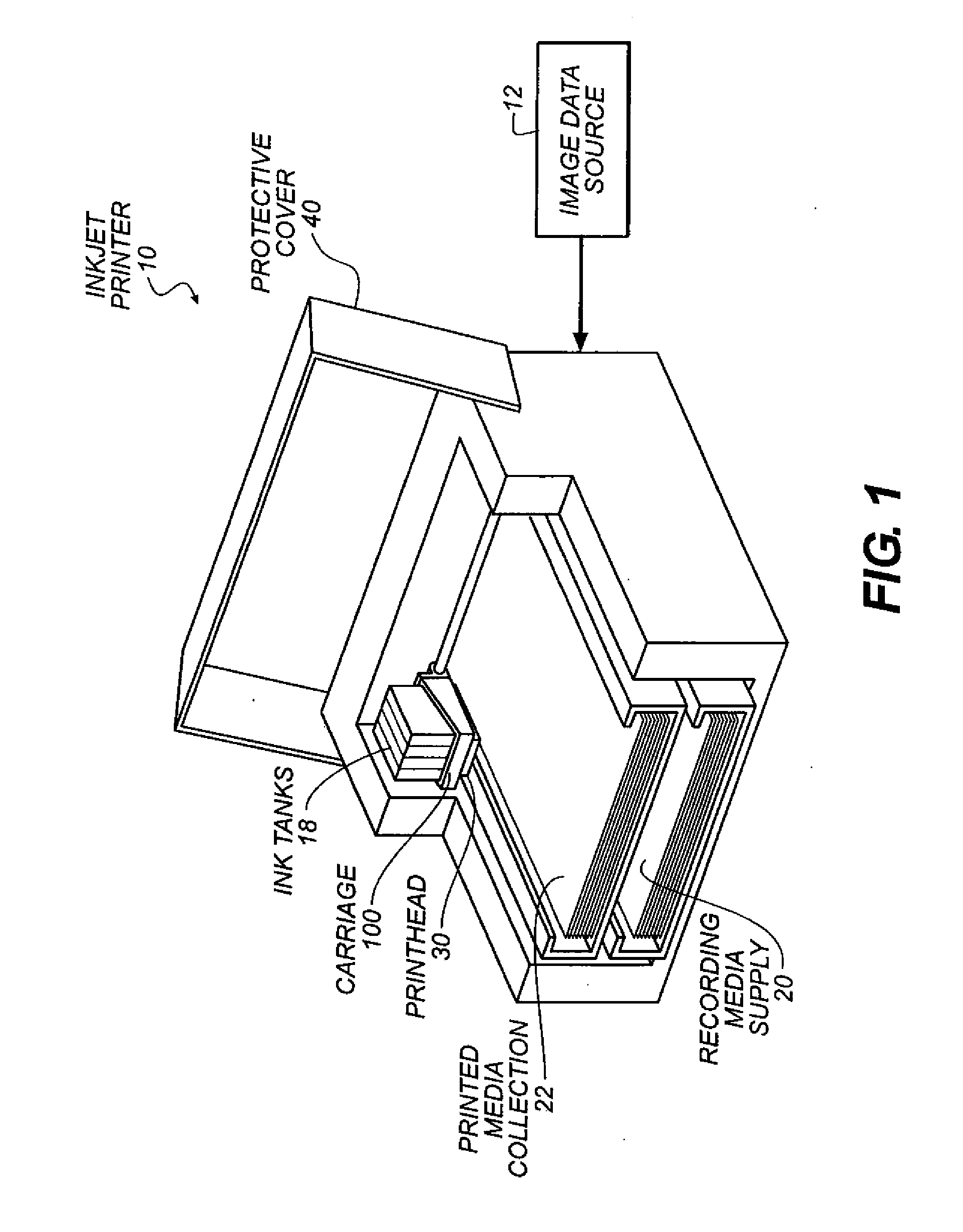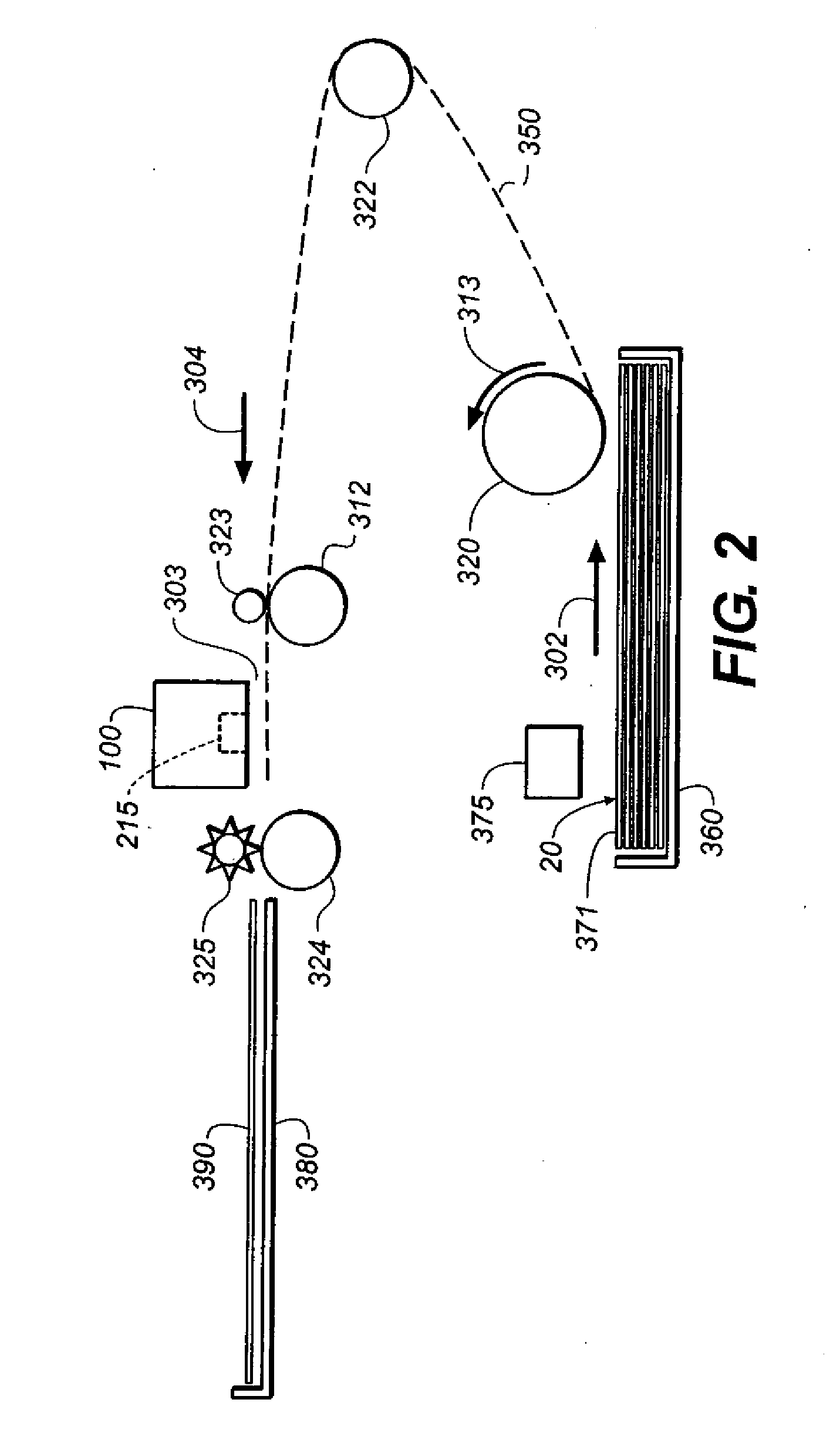Inkjet printing system, ink, and process
a printing system and inkjet technology, applied in papermaking, transportation and packaging, non-fibrous pulp addition, etc., can solve the problems of high printing severe degradation of ink jetting performance, and inability to bind pigment inks. to achieve the effect of reducing polymer deposits and high print density and text sharpness
- Summary
- Abstract
- Description
- Claims
- Application Information
AI Technical Summary
Benefits of technology
Problems solved by technology
Method used
Image
Examples
examples
Polymer Binder Preparation
Polymer P1
[0064]Mixed in a 1-liter, three-necked round-bottom flask equipped with a reflux condenser under nitrogen atmosphere was 78 g of benzyl methacrylate, 22 g of methacrylic acid, 4.6 g of 1-dodecanethiol, and 400 mL of methyl ethyl ketone. The solution was stirred and purged with nitrogen for 20 minutes and heated to 70° C. in a constant temperature bath; 1.5 g. of azo(bis)isobutyronitrile (AIBN) was added. After 24 hours, the resulting solution was cooled. The resulting polymer solution was mixed with water and potassium hydroxide to achieve 85% acid neutralization. Thereafter the whole mixture was distilled at 50° C. under reduced pressure to remove the organic solvent. The final water-soluble polymer solution had a concentration of ca. 20 wt. % in water and its pH was ca. 8.5. The number average molecular weight was 4320 daltons, the weight average molecular weight was 7160 daltons, and the calculated acid number was 146.
Polymer P2
[0065]P2 was pre...
example a
[0067]Preparation of black inks from self-dispersed carbon black dispersions of various volatile surface functional groups.
Ink Formulation
Comparative Ink A1
[0068]To prepare the Ink A1, 34.6g of self-dispersed carbon black dispersion BONJET® CW-3 from Orient Corporation of America (13 wt % active), 5 g of diethylene glycol, 8 g of glycerol, 3g of polyethylene glycol 400 (Dow Chemical Co.), 7.5 g of STRODEX™ PK-90 surfactant solution from Dexter Chemical L.L.C. (diluted to 2% wt), and 2.0 g of water soluble polymer P2 solution (20% active) were added together with distilled water so that the final weight of the ink was 100.0 g. The final ink contained 4.5% carbon 5% diethylene glycol, 8% glycerol, 3% polyethylene glycol 400, 0.15% STRODEX™ PK-90 and 0.4% water-soluble polymeric binder. The solution was filtered through a 1.2 μm polytetrafluoroethylene filter. The resulting ink had the following physical properties: a surface tension of 33 dynes / cm at room temperature, a viscosity of 0...
example b
[0075]Black inks made from >11% surface functional groups self-dispersed carbon black do not show reduced density upon the addition of water soluble polymer.
Comparative Ink B1a
[0076]To prepare the Ink Bla, 34.6 g of self-dispersed carbon black dispersion BONJET® CW-3 from Orient Corporation of America (13 wt % active), 5 g of diethylene glycol, 8 g of glycerol, 3 g of polyethylene glycol 400 (Dow Chemical Company), 6.0 g of STRODEX™ PK-90 surfactant from Dexter Chemical L.L.C. (diluted to 2% wt), and 2.0 g of water soluble polymer PI (20% active) were added together with distilled water so that the final weight of the ink was 100.0 g. The final ink contained 4.5% carbon 5% diethylene glycol, 8% glycerol, 3% polyethylene glycol 400, 0.12% STRODEX™ PK-90 and 0.4% water-soluble polymeric binder. The solution was filtered through a 1.2 μm polytetrafluoroethylene filter. The ink contained 0.0016 mmol of untitrated polymer acid per gram of ink and no additional organic base.
Comparative In...
PUM
| Property | Measurement | Unit |
|---|---|---|
| Fraction | aaaaa | aaaaa |
| Fraction | aaaaa | aaaaa |
| Fraction | aaaaa | aaaaa |
Abstract
Description
Claims
Application Information
 Login to View More
Login to View More - R&D
- Intellectual Property
- Life Sciences
- Materials
- Tech Scout
- Unparalleled Data Quality
- Higher Quality Content
- 60% Fewer Hallucinations
Browse by: Latest US Patents, China's latest patents, Technical Efficacy Thesaurus, Application Domain, Technology Topic, Popular Technical Reports.
© 2025 PatSnap. All rights reserved.Legal|Privacy policy|Modern Slavery Act Transparency Statement|Sitemap|About US| Contact US: help@patsnap.com



